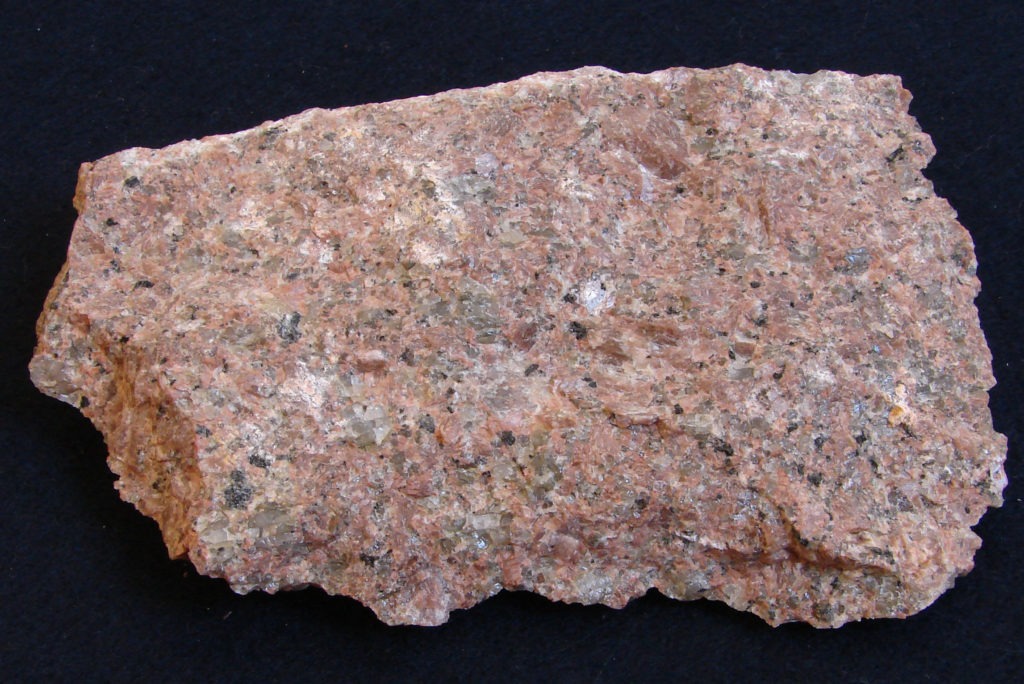Granite
Granite forms when bits of quartz and feldspar are pushed up out of the liquid rock beneath the earth’s crust, so it’s one kind of igneous rock. The word “granite” comes from the Latin word “granum”, a grain, because granite is made of lots of smaller bits of quartz and feldspar stuck together (think of our word “granary”, a place where you store grain). Granite comes in different colors, usually pink to gray or sometimes black.
Granite’s a very hard stone. It’s hard because it formed as hot liquid stone, and so the molecules inside it are all jumbled up any which way, instead of lying in layers as in sedimentary rocks like limestone or slate.
Because granite is so hard, people sometimes use it for building stone or statues if you want them to last a long time. But granite is so hard that it’s also hard to cut into blocks or statues. In ancient Egypt, sculptors used granite to carve statues of pharaohs. People today often use granite for kitchen countertops, too.
Igneous Rocks
Igneous means “fiery”, and igneous rocks are rocks that were made by heating them up in a fire.
Usually that fire is the big fire inside the earth, under the earth’s crust. Inside the earth, radioactivity creates very high temperatures of about 1000 degrees Celsius (that’s about 1800 degrees Fahrenheit). Because it’s so hot, any rocks that are down in that core are liquids, not hard as they would be on the surface of the Earth.
But sometimes these liquid rocks shoot up to the surface when volcanoes suddenly erupt. Then tons of liquid rock rockets out of the top of the volcano and lands on the surface. When the liquid rock cools down, it becomes igneous rock.
There are a lot of different kinds of igneous rock, depending on what kind of molecules are involved, and how fast the liquid rock cooled down. Some of the better-known kinds of igneous rock that comes from volcanoes are pumice, lava, and obsidian. When lava cools, it often turns into basalt.
Other igneous rocks formed slowly, deep in the earth. Some examples are quartz and granite. About a quarter of the rocks on earth are igneous rocks. Nearly all of the rest are sedimentary.

